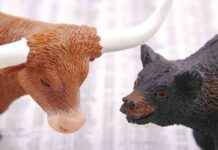Best Wallet has recently launched its highly anticipated ‘Upcoming Tokens’ feature, which aims to provide investors with easy access to new presales and early project involvement. This feature allows users to stay ahead of the game by offering seamless access to the hottest presales in the crypto market.
The Best Wallet super app stands out from other crypto wallets due to its multifunctional capabilities. Users can buy and sell tokens across multiple chains, invest in cryptocurrencies before they hit exchanges, and benefit from the best rates with the Onramper feature. Additionally, Best Wallet boasts an in-house decentralized exchange called Best DEX and is planning to introduce a crypto debit card for real-world token spending.
Holdings of Best Wallet’s native BEST token come with exclusive perks, including discounts on trading fees and high-yield staking opportunities. Moreover, BEST token holders have governance rights that allow them to vote on important matters concerning the wallet’s ecosystem upgrades and treasury spending.
The ‘Upcoming Tokens’ feature simplifies the process of participating in presales by enabling users to easily invest in new projects from a single terminal within the Best Wallet app. This time-saving feature eliminates the need to navigate through various presale websites and guides users through every step of the investment process, from tracking token values to claiming tokens post-presale.
In addition to the ‘Upcoming Tokens’ feature, Best Wallet has a roadmap that includes innovative features like fingerprint-scan login, an NFT gallery, and an aggregated crypto news feed. The wallet has also introduced a unique BEST airdrop campaign, where users can earn points by completing tasks and convert them into BEST tokens. Best Wallet has gained recognition as a leading crypto wallet in the industry and continues to enhance the user experience with its cutting-edge features.
Overall, Best Wallet is not just a storage solution for cryptocurrencies but a comprehensive tool that is reshaping the blockchain user experience. Users are encouraged to visit the Best Wallet website for more information and conduct their own research before engaging with any products or services mentioned.














